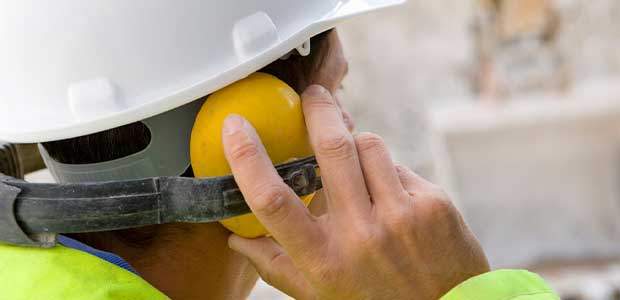
Jobsite Noise Hazards and Hearing Loss
Regular Noise-Induced Hearing Loss (NIHL) may not be the first construction hazard that comes to mind, but a construction site can pose many dangers which can lead to hearing loss, no matter what precautions are taken. The construction industry has the second highest number of workers exposed to loud noise, behind manufacturing.
The Causes are Many and the Damage is Real
NIHL is gradual, though the rate of hearing loss is greatest during the first 10 years of exposure. For much of the workday, workers may be exposed to various types and levels of noise, and for varying amounts of time. Many workers don’t realize they have hearing damage or impairment until it’s too late.
Unfortunately, there is no reversing hearing loss; it’s permanent.
It’s important to conduct yearly hearing tests for workers routinely exposed to hazardous noise levels and help take mitigating efforts to prevent hearing impairment or loss. OSHA considers 8 hours of exposure to 85 dBA (as a time-weighted average) damaging to ones’ hearing.
The bad news for construction workers is much of the equipment used regularly is above the 85 dBA exposure level:
- Jackhammer: 100 dBA
- Chop saw: 105 dBA
- Chain saw: 110 dBA
- Hammer drill: 115 dBA
The Statistics are Concerning
According to the Center for Disease Control (CDC)
- Approximately 14% of all construction workers have hearing difficulty.
- About 7% of all construction workers have tinnitus (ringing in the ears)
- About 25% of noise-exposed tested construction workers have a material hearing impairment.
- 16% of noise-exposed tested construction workers have hearing impairment in both ears.
Tell Tale Signs of Hearing Loss
Awareness of the symptoms can help you identify possible damage and take the precautions necessary to reduce the damage. Signs such as, ringing in the ears, difficulty hearing conversations clearly, and background noise distractions are all symptoms of hearing loss or impairment.
Minimizing the Hazard – Reduce, Move, Block
There are a variety of types of personal protective equipment (PPE) available which are designed for specific conditions. Typical hearing personal protective devices include roll down foam plugs, reusable earplugs, custom molded plugs, canal caps, and earmuffs. Proper and consistent use of these devices is imperative for effective protection.
Administrative and engineering controls, and proper PPE can limit noise levels and noise exposure. There are ways to mitigate the noise on a jobsite.
OSHA recommends a 3-step noise hazard control process:
- Reduce: Use quieter equipment.
- Move: Use extension cords to move the equipment father away. Move generators farther away
- Block: Build temporary plywood barriers to block the noise. Put a wooden box over a loud generator.
Communicating Noise Safety is Vital
OSHA requires employers to provide workers with safety training in a clear way. What’s vital to convey are permissible limits, the dBAs of common construction tools and tasks, the noise and duration levels that cause hearing loss, and the correct forms of PPE.
It’s in everyone’s best interest to be aware of and communication noise hazards on a jobsite, and to use appropriate mitigation and PPE correctly to prevent work-related hearing damage.
Resources
OSHA Standard
https://www.osha.gov/noise/standards
OSHA Guidelines
CDC
https://www.cdc.gov/niosh/topics/ohl/construction.html
Disclaimer: The information contained in this article is intended for general information purposes only and is based on information available as of the initial date of publication. No representation is made that the information or references are complete or remain current. This article is not a substitute for review of current applicable government regulations, industry standards, or other standards specific to your business and/or activities and should not be construed as legal advice or opinion. Readers with specific questions should refer to the applicable standards or consult with an attorney.



